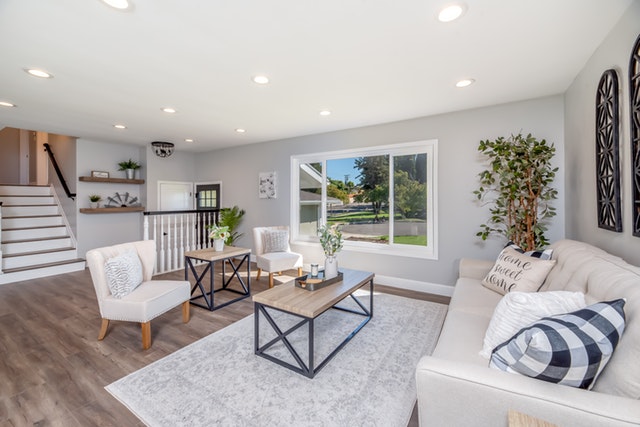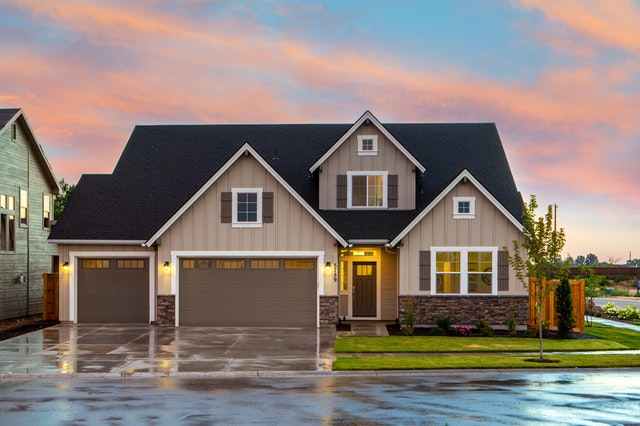 Owning a home comes with major responsibilities and also offers major questions. One of the biggest questions that people will have to answer is whether or not they want to take out a home warranty. In order to decide whether a home warranty is worth it, it is important to first understand what a home warranty is.
Owning a home comes with major responsibilities and also offers major questions. One of the biggest questions that people will have to answer is whether or not they want to take out a home warranty. In order to decide whether a home warranty is worth it, it is important to first understand what a home warranty is.
What Is A Home Warranty?
A home warranty is not the same thing as home insurance. First of all, homeowners insurance is something that is required to purchase a home in the first place. Home insurance is in place to protect the homeowner, and the lender, from disaster.
In contrast, a home warranty is not required but might be offered by the lender or a third party. A home warranty is designed to cover the repairs that come with routine wear and tear on various home appliances. This includes items such as the HVAC system, plumbing, and electricity (but everyone needs to read the information on any home warranty policy to see exactly what is covered.) Therefore, what might not be covered by home insurance is covered by a home warranty and vice versa.
The Benefits Of Having A Home Warranty
One of the biggest benefits that come with a home warranty policy is peace of mind. Every home appliance is going to break down at some point as a result of routine wear and tear. When this happens, it can create a large, unexpected expense.
When this expense arises, it is helpful to have a policy that covers the cost of repairs. People might be surprised to hear that homeowner’s insurance policies are not going to cover routine repairs on appliances resulting from wear and tear. This unexpected expense can cause a lot of stress for someone’s budget. The cost of this repair can be covered by a home warranty.
The Drawbacks Of A Home Warranty
On the other hand, there are also a few drawbacks to note. The biggest drawback of a home warranty is that people might end up paying for the cost of the repair simply via the cost of a home warranty. Many of the repairs that are not covered by homeowner’s insurance can be covered out of pocket. Therefore, having a home warranty policy might be redundant.
It is important to weigh the benefits and drawbacks of a home warranty before deciding whether or not the policy is worth it. Work with your trusted real estate professional to determine the best options for your personal situation.
 Chimneys are as old as homes themselves. Yet, when it comes to chores, cleaning the chimney is one of the most neglected tasks. While people often think about yard work and housework, they often forget to clean the chimney.
Chimneys are as old as homes themselves. Yet, when it comes to chores, cleaning the chimney is one of the most neglected tasks. While people often think about yard work and housework, they often forget to clean the chimney. Millennials are a huge socio-demographic group of over 83 million people. Many of them want to buy a home but face challenges that their parents did not necessarily have. Homes are more expensive. In most places, home prices rebounded to exceed the pre-2008 economic collapse values. Moreover, home prices continue to go up.
Millennials are a huge socio-demographic group of over 83 million people. Many of them want to buy a home but face challenges that their parents did not necessarily have. Homes are more expensive. In most places, home prices rebounded to exceed the pre-2008 economic collapse values. Moreover, home prices continue to go up. Commuting for hours in traffic on a daily basis is a waste of resources, time, and money. It is stressful and bad for the environment. The infrastructure in many parts of the United States is falling apart. The roads and highways do not have sufficient capacity to handle the demands of the traffic load that continues to increase each year. Many busy professionals and families are turning to a solution of owning two homes for the convenience of enjoying dual-location living.
Commuting for hours in traffic on a daily basis is a waste of resources, time, and money. It is stressful and bad for the environment. The infrastructure in many parts of the United States is falling apart. The roads and highways do not have sufficient capacity to handle the demands of the traffic load that continues to increase each year. Many busy professionals and families are turning to a solution of owning two homes for the convenience of enjoying dual-location living. One of the dreams that many people have is to eventually retire. People work their entire lives and save diligently to be able to enjoy those golden years. When the time finally comes, people need to think about the community that is right for them. With this goal in mind, there are a few common questions that everyone should ask to find their ideal retirement community.
One of the dreams that many people have is to eventually retire. People work their entire lives and save diligently to be able to enjoy those golden years. When the time finally comes, people need to think about the community that is right for them. With this goal in mind, there are a few common questions that everyone should ask to find their ideal retirement community. Sellers of homes often make mistakes that are not in their best interests. Here are common mistakes people make when selling a home and how to avoid them.
Sellers of homes often make mistakes that are not in their best interests. Here are common mistakes people make when selling a home and how to avoid them. Owning property comes with a number of major responsibilities. This includes home maintenance and repairs. One of the common topics that people think about is the garage door. Sometimes, the garage door breaks and needs to be replaced. Other people might be adding a garage door for the first time. There are lots of options to choose from and this is an important decision.
Owning property comes with a number of major responsibilities. This includes home maintenance and repairs. One of the common topics that people think about is the garage door. Sometimes, the garage door breaks and needs to be replaced. Other people might be adding a garage door for the first time. There are lots of options to choose from and this is an important decision. For those who are interested in learning more about real estate, property management companies are an important topic of discussion. Some people might not ever consider hiring a property management company.
For those who are interested in learning more about real estate, property management companies are an important topic of discussion. Some people might not ever consider hiring a property management company. When someone purchases their first home, this is a significant step. There are a number of issues that people need to think about because purchasing a home is typically someone’s most significant investment.
When someone purchases their first home, this is a significant step. There are a number of issues that people need to think about because purchasing a home is typically someone’s most significant investment. It is important for everyone to diversify their investments and one of the assets that people often look toward is real estate. In a healthy market, real estate should appreciate in value.
It is important for everyone to diversify their investments and one of the assets that people often look toward is real estate. In a healthy market, real estate should appreciate in value.